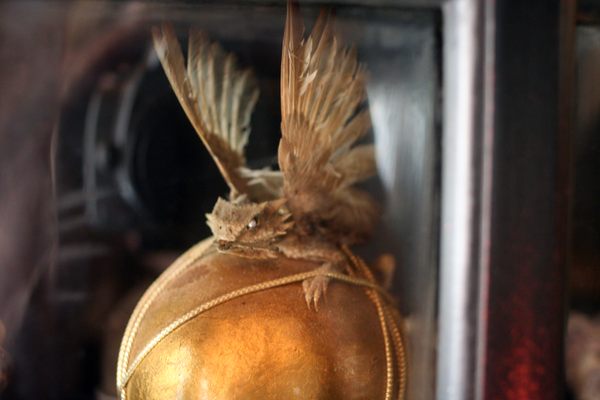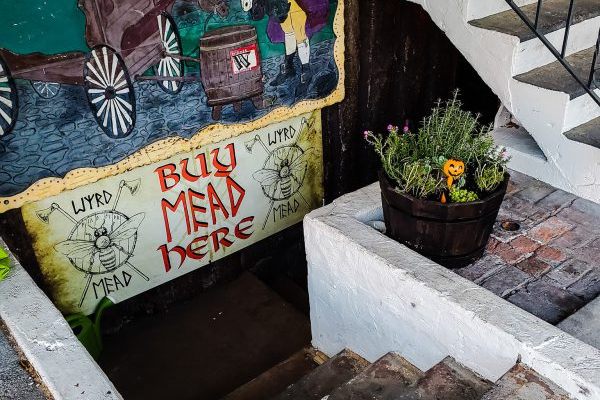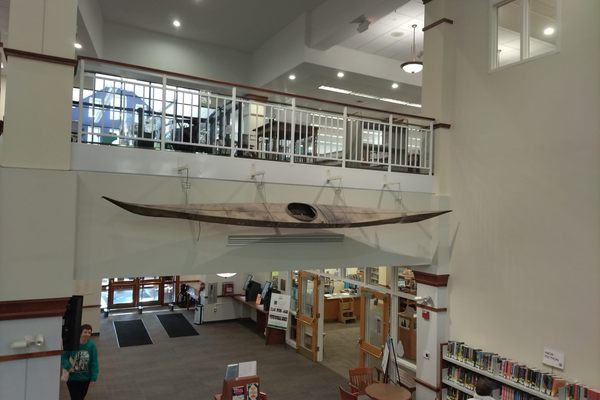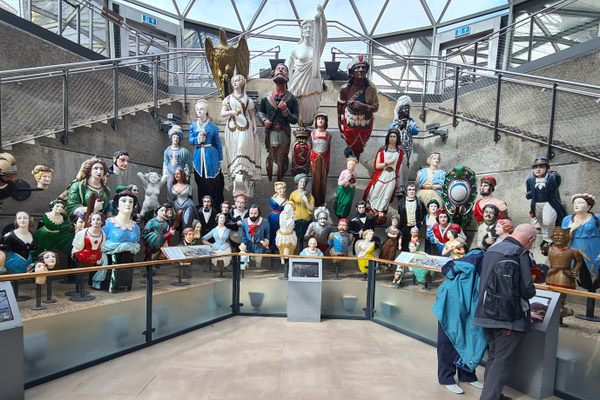Lincoln Street Kayak & Canoe Museum
Stop by to view a fleet of handmade kayaks, all modeled on traditional Arctic hunting vessels.
If you’ve ever rented a kayak, you might remember returning the boat to a rack near the water: There, one boat floats above another, with hull after hull stacked in tidy rows. Harvey Golden’s collection of kayaks is a little different. Though he has taken most of the vessels out for a cruise on the Columbia River or other Portland-area waterway, the boats spend much of their time on land and indoors, in a narrow storefront that was previously a grocery store and then a hair salon. This is the Lincoln Street Kayak & Canoe Museum, and it holds several dozen boats, mainly fabricated in Golden’s garage. (He used to display them in his living room, but space was tight.)
Since the mid-1990s, Golden has been fabricating replicas of boats built by indigenous groups in the Arctic, who have relied on the vessels to hunt beluga, narwhals, dolphins, muskrats, and other creatures, and to harvest seaweed and mollusks. Beyond these expeditions, the boats also proved useful for other routines, like delivering mail or feuding with neighbors.
Golden produces scores of small models and full-sized replicas, spanning 400 years of designs. They’re closely modeled on versions in various museums, often collected more than a century ago by naturalists, whalers, or members of foreign expeditions to the cold, icy north. His fleet includes models of boats used by members of the Koryak, Chukchi, Unangan (or Aleut), Yup’ik, Iñupiat, and Kalaallit cultures, clustered around the Bering Sea, Aleutian Islands, Alaska, and Greenland, respectively.
Many of the boats are narrow, lightweight, and sleek—pictured from above, on one of Golden’s trips out onto the water, they look like newly fallen leaves. The indigenous builders used materials that were locally available, so Golden does, too, even when those materials differ from the original boats that inspired his homages. He reaches for fir, pine, cedar, and oak, and uses stretched nylon instead of animal skins.
Harvey began his building spree because he wanted to better understand how the boats were assembled and how they handled on the water. Now, his collection includes a Koryak vessel from Russia’s Far East, made around 1910, whose two hand paddles would have helped its passengers stealthily approach a sleeping seal. On a replica of a kayak paddle from Baffin Island, dating to the 1830s, Golden used plastic as a stand-in for a sharp, ivory tip—useful for navigating the icy water and jabbing at whales.
Know Before You Go
The museum is only reliably open once a week. Pop by on Thursdays between 5 p.m. and 7 p.m., and you can rest assured that you’ll get in. If the timing doesn’t line up, it never hurts to drop by to see if you can catch Golden, or reach out to see if you can schedule an appointment.


















Follow us on Twitter to get the latest on the world's hidden wonders.
Like us on Facebook to get the latest on the world's hidden wonders.
Follow us on Twitter Like us on Facebook